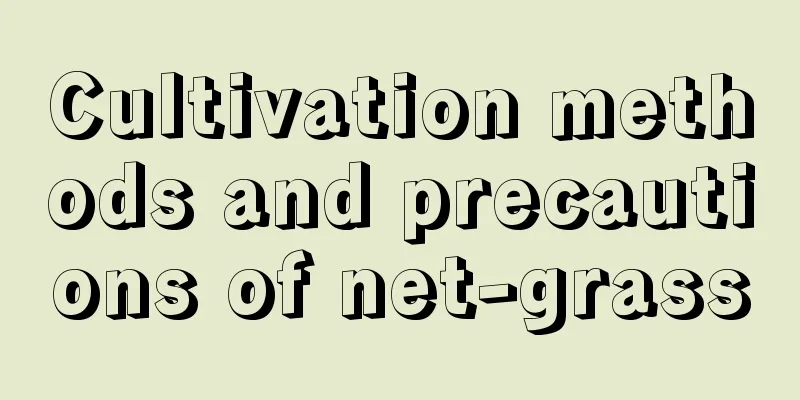Cultivation methods and precautions of net-grass

Farming methodsLight and temperatureNet-veined grass prefers a semi-shaded growing environment and does not like direct sunlight. In summer, the spiderwort needs to be shaded to block out most of the sunlight. In winter, you can move the spiderwort indoors to a place where it can get sunlight for maintenance. The suitable temperature for the growth of spiderwort is between 18 and 24 degrees Celsius. It is not very cold-resistant, and the temperature for wintering should be above 10 degrees Celsius and not lower than 8 degrees Celsius. soilWhen planting spiderwort, you can choose soil rich in humus, which requires strong air permeability and water retention capacity. Peat soil can also be used. Watering and fertilizingWatering spiderwort requires certain skills, because the root system of spiderwort is relatively shallow, so whether you water it too much or too little, it will have a bad effect. Basically, the soil in the pot should be kept slightly moist, not too dry or too wet. Too dryness will cause the leaves to lack water, and too wetness will cause the roots and rhizomes of the spiderwort to rot. Net-veined grass has a high demand for fertilizer, but fertilization should follow the rule of applying fertilizer thinly and frequently. During the period of vigorous growth of spiderwort, you can fertilize it once every half a month. In order to make the leaves green, you can spray some manganese sulfate solution on the leaves. Reproduction methodThe propagation of spiderwort usually adopts the methods of division, cutting propagation and tissue culture. PrecautionsPests and diseasesPatellar spiderwort often suffers from diseases and insect pests during its growth, but it also has diseases such as leaf rot and root rot, as well as pests such as scale insects, snails and red spiders. ToppingDuring the growing period of spider grass, in order to encourage more branches and control the height of the plant, it is necessary to pinch the top frequently, which is conducive to the vigorous growth of spider grass. |
Recommend
How to judge whether the bird of paradise should be watered? How many days is the normal watering time?
Bird of Paradise is a plant that has high require...
How to make figs sprout quickly
Fig germination environment Figs generally mature...
1 tomato and 2 pounds of watermelon rind, green radish sprouts rapidly, and 80 jasmine flowers bloom!
Feed the flower some tomatoes and it will grow in...
Passion fruit planting methods and management points
Passion fruit , known as the "king of juice&...
Can walnut shells be used as flower soil? How to process walnut shells for planting flowers
Can walnut shells be used as flower soil? Walnut ...
Characteristics of Banyan Tree
1. Appearance characteristics 1. Its height can r...
How to prune bougainvillea in summer?
Many friends have grown bougainvillea at home. Bo...
The Flower Language and Legend of Amaryllis
Introduction to Amaryllis Name: Amaryllis Other n...
How much is the yield per mu of Astragalus membranaceus? Planting technology and yield per mu
Yield of Astragalus membranaceus per mu Astragalu...
How to grow green onions to get high yield?
With the rapid economic growth, people's livi...
How to prune lilies
1. Purpose of pruning Pruning has two main purpos...
How to prevent dahlia leaves from turning yellow and falling off
Pay attention to the choice of potting soil Dahli...
Cultivation methods and maintenance of old purslane piles
How to grow purslane into an old pile When Pursla...
Can mint repel mosquitoes?
1. Reasons Because it contains volatile substance...
Is wolfberry a fruit or a vegetable?
Is wolfberry a fruit or a vegetable? Although wol...









